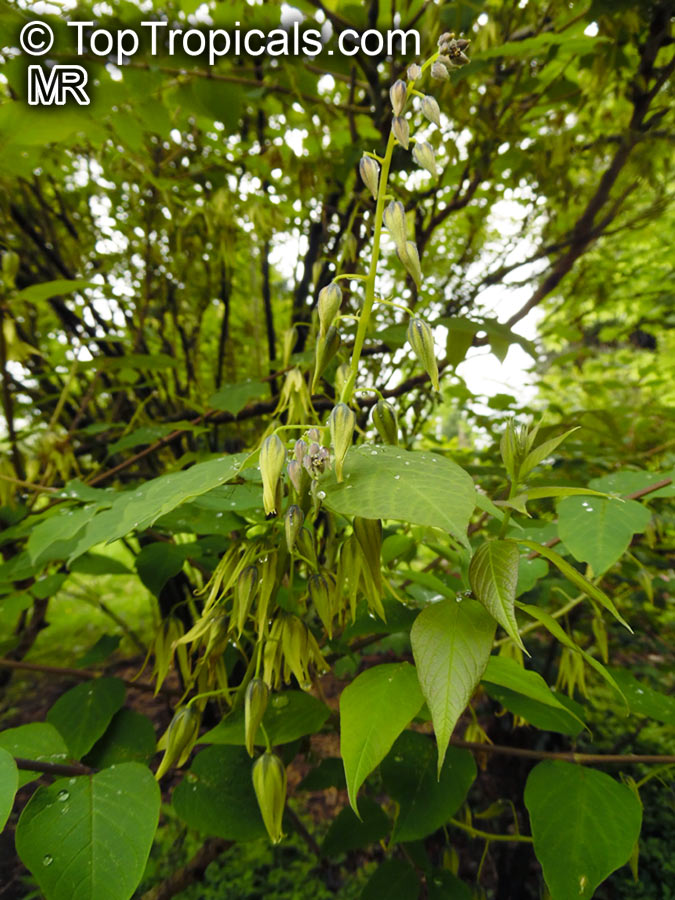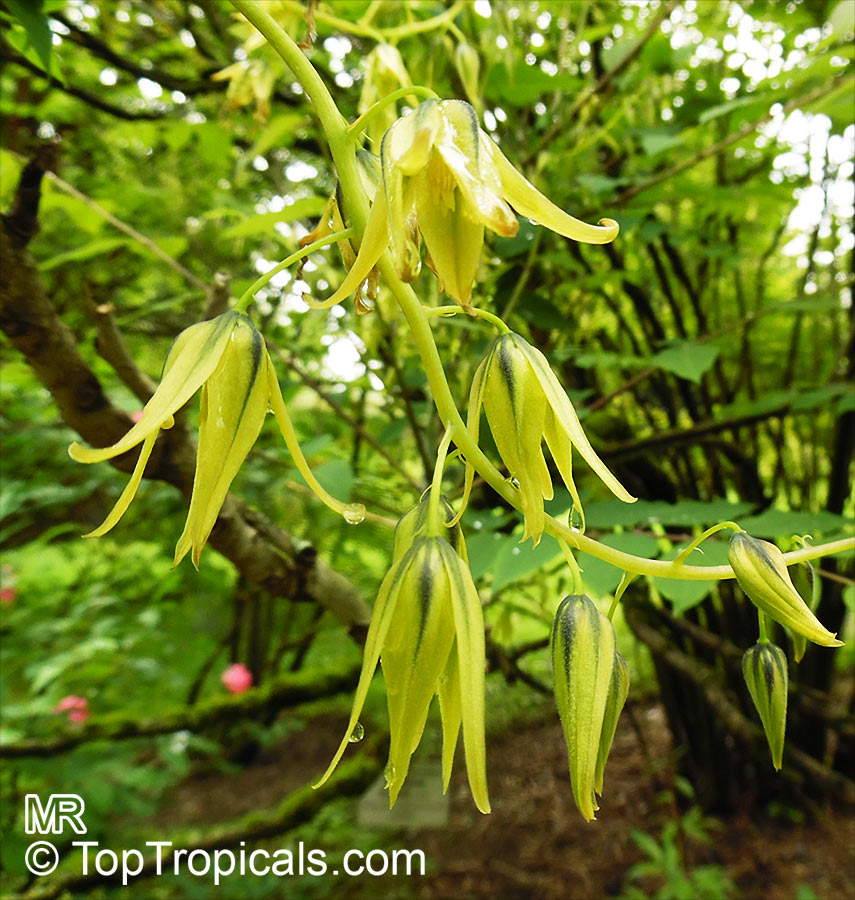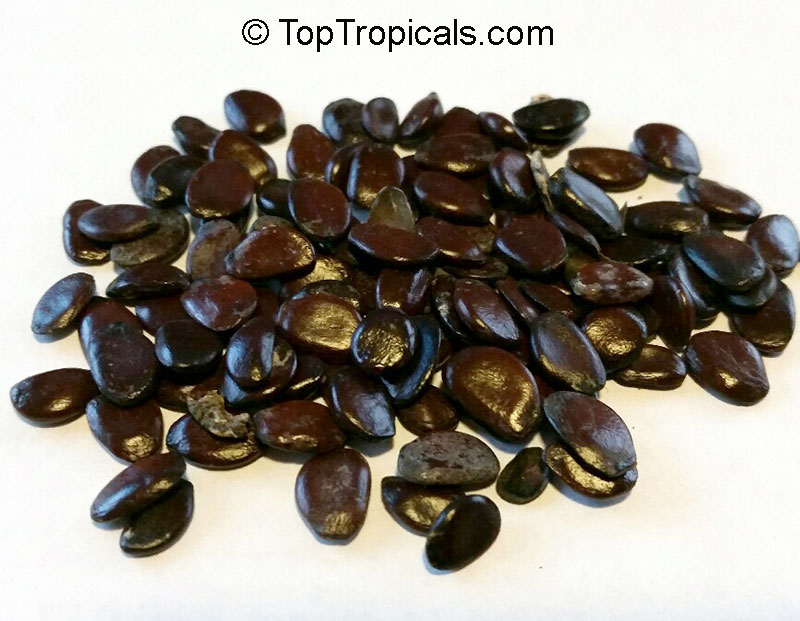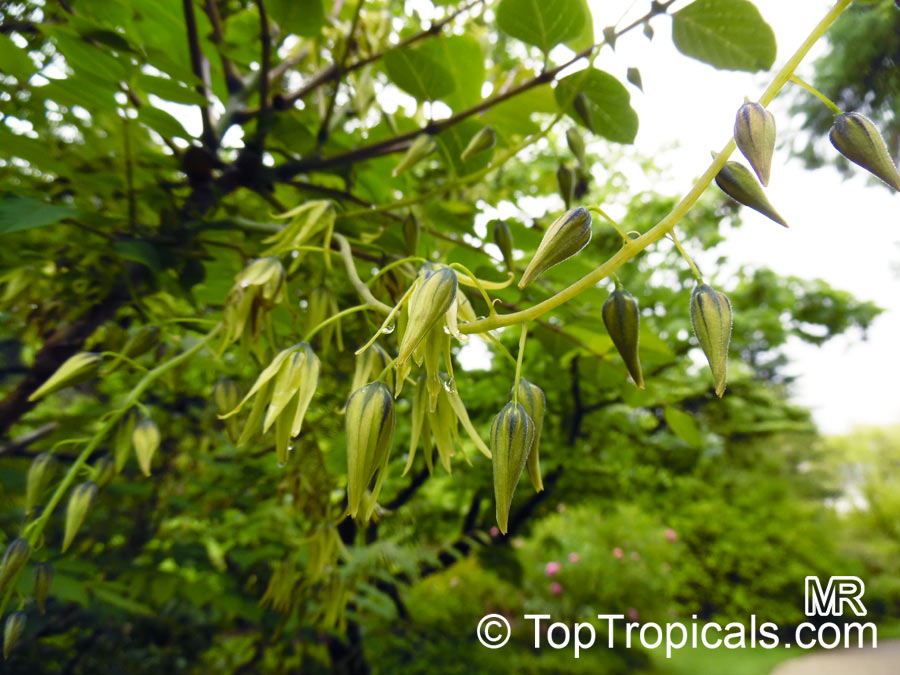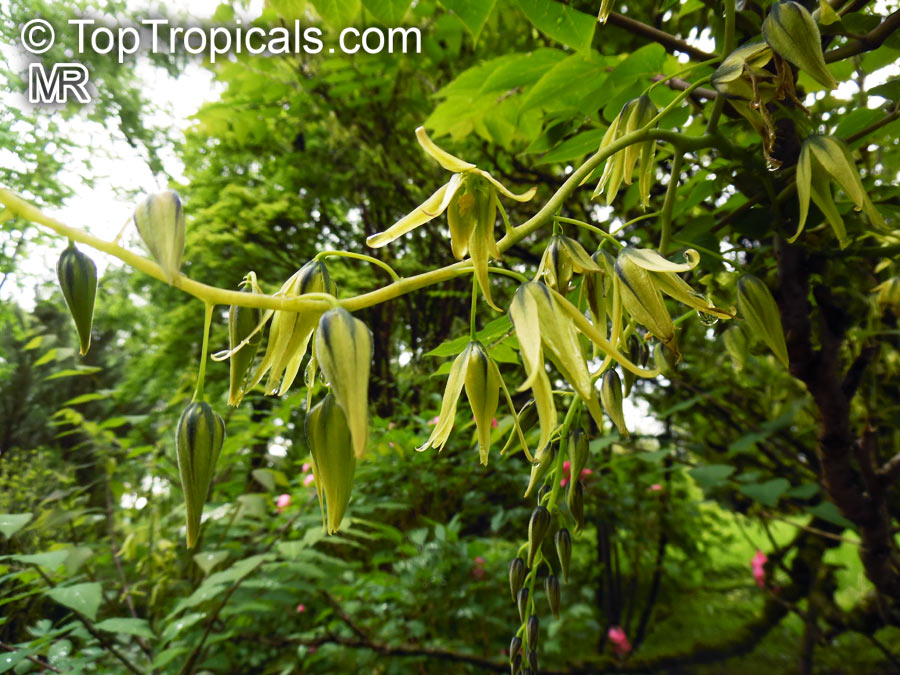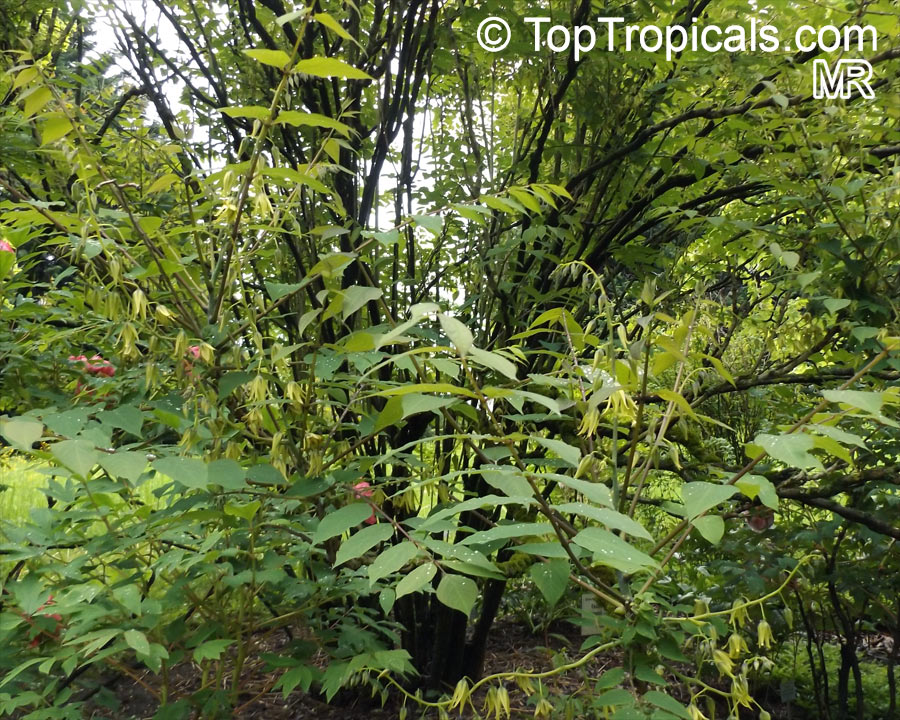Pictogram Guide · Mouse over pictogram for definition
Decaisnea fargesii
Dead Man's FingersFamily: Lardizabalaceae
Origin: Eastern Asia










Decaisnea, known commonly as dead man's fingers, is a genus of flowering plant in the family Lardizabalaceae. It is native to eastern Asia, from China west to Nepal and south to Myanmar.
Decaisnea are deciduous shrubs or small trees. The flowers are produced in drooping panicles. Each flower has greenish-yellow sepals and no petals. The fruit is a soft greenish-yellow to blue-black pod-like follicle and contains a transparent, glutinous, jelly-like pulp containing numerous flat black seeds about a centimeter wide. The pulp is edible. The flavor of D. fargesii fruit pulp has been described as sweet and similar to watermelon, and the texture described as "gelatinous".
Decaisnea is grown as an ornamental plant for its foliage and decorative fruit, bright blue in many cultivated specimens. Most plants in cultivation derive from Chinese seed and are commonly grown under the name D. fargesii. The plants are successfully grown in cooler temperate climates, and in fertile, well-drained soil. They are tolerant of temperatures as low as 5°F.
